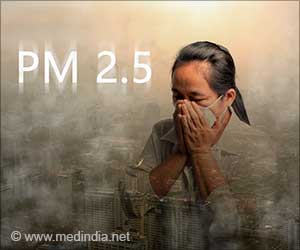Pathology is more than just diagnosing disease. It’s about understanding the causes, progression and finding solutions. This International Pathology Day, let's appreciate pathologists.

- Pathologists play an important role in diagnosing and understanding diseases
- International Pathologists Day is celebrated every year during the second week of November
- The theme for the year 2024 is ‘The rise of global Antimicrobial Resistance (AMR)’
Pathology: The Cornerstone of Modern Medicine and a Fascinating Field of Study
Go to source).
With tools like digital pathology and AI, pathologists are making faster, more accurate diagnoses. Pathology is transforming into one of the most tech-driven areas of healthcare! #digitalpathology #AI #medindia’
Role of Pathology in Medicine
Pathology is an interesting field that sits at the intersection of science, medicine and investigative work. Pathologists examine tissues, cells and body fluids to determine the underlying causes of diseases and to guide suitable treatment plans.Pathology has many subfields cytopathology, forensic pathology and neuropathology, these fields provide a better scope for understanding diseases.
Pathology with the help of cutting-edge technologies such as digital pathology, artificial intelligence (AI) tools enables pathologists to make faster, more precise diagnoses, transforming the field into one of the most tech-driven areas of medicine.
International Pathology Day 2024
International pathology day is celebrated annually during the second week of November. This year it is on November 6. The day is dedicated to raising awareness about the crucial role of pathology in healthcare and highlighting the essential contributions of pathologists to patient care.Observed all over the world, it emphasizes the importance of laboratory medicine in diagnosing diseases, planning treatment and improving patient care.
The common theme for this year is “The rise of global Antimicrobial Resistance (AMR)”. Antimicrobial resistance is one of the most stressful global threat in today’s world. If no precautionary measures are taken, 10 million people each year could die from effects of AMR by 2050.
Antimicrobial Resistance
Antimicrobial resistance is a condition where bacteria, viruses, and fungi no longer respond to antimicrobial medications, rendering them ineffective in treating infection and leads to chronic infections (2✔ ✔Trusted SourceAntimicrobial resistance
Go to source).
AMR is a natural process that occurs over time through genetic changes in pathogens. This is due to human activity due to overuse or misuse of drugs to control disease in humans, animals and plants.
Role of Pathology in AMR
There are various mechanisms through which AMR is developed. The known pathological mechanisms are- Pathogens undergo genetic mutation that makes them resistant to effect of antimicrobial drugs which alters the target sites of antibiotics, decreasing the drug's effectiveness.
- Horizontal gene transfer mechanisms such as transformation, conjugation and transduction play an important role in rapid spread of AMR among microorganisms.
- Some bacteria form biofilms, a protective layer that acts as a shield for them against the antimicrobials, and this biofilm can be a reason for chronic infections which are difficult to treat.
- Bacteria possess efflux pumps that can flush out antimicrobial agents from their cells, which reduces medication effect to sub-lethal levels.
- Certain pathogens produce enzymes that inactivate effect of antimicrobial agents, which results in ineffectiveness of medications.
Importance of pathology in disease diagnosis, treatment plans and understanding disease progress is invaluable. The contribution made by pathologists in healthcare system must be appreciated.
References:
- Pathology: The Cornerstone of Modern Medicine and a Fascinating Field of Study - (https://indiaeducationdiary.in/pathology-the-cornerstone-of-modern-medicine-and-a-fascinating-field-of-study/)
- Antimicrobial resistance - (https://www.who.int/news-room/fact-sheets/detail/antimicrobial-resistance)
Source-Medindia










